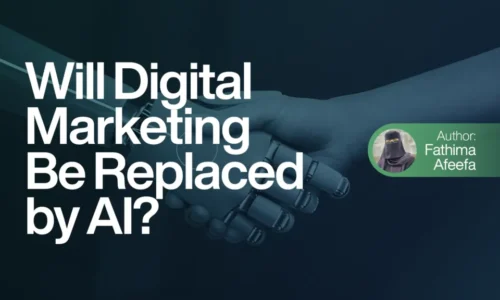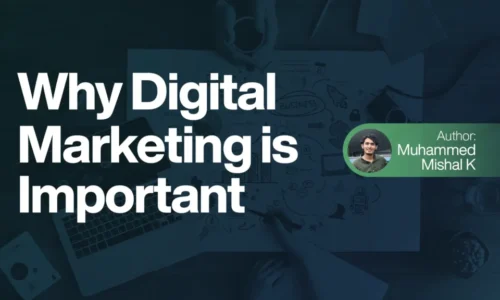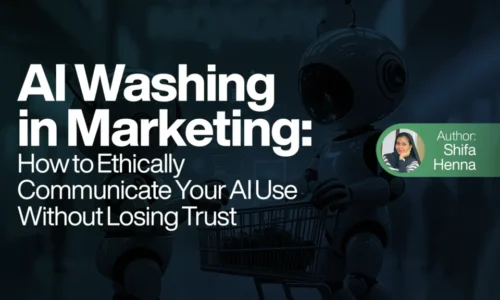Recent Trends in Digital Marketing:What You Need to Know in 2025
Digital marketing advances every day. What worked this year may not work next year. And what works today may not work tomorrow. For companies, learners, and advertisers, it’s important to stay up-to-date with the latest trends. In this blog, I’ll break down current digital marketing trends for 2025 in a simple and easy-to-understand way
Table of Content
1.Artificial intelligence(AI) in Marketing
Artificial Intelligence is no longer just a trend — it is a key mechanism in business operations today. From content creation, understanding consumer behaviour, personalising ads, and responding to consumer questions, AI tools continue to transform industries. For example, chatbots are taking over customer service calls, responding right away, and recommendation engines like those used by Netflix suggest which products or services customers have the greatest likelihood of enjoying.
Why it matters
- AI saves time
- provides a more personalised experience for customers,
- reduces advertising costs by utilising better targeting and automation
2. Short-Form Video Content
If you’ve recently been scrolling on YouTube Shorts, Instagram Reels, or TikTok, you have noticed how popular short videos have become. Many people now prefer to consume short, interesting videos rather than read long postings or articles. This shift in behaviour has made short-form video one of the most effective techniques for brands to capture attention and connect with customers.
Businesses have begun to use short videos for product demos, customer testimonials, short how-tos, and even entertaining ads. The best part? This can even happen for small companies—all you need is a smartphone, creativity, and consistency.
3. Voice search optimisation
With smart speakers and voice assistants like Alexa, Siri, and Google Assistant becoming increasingly popular, people are using voice search more often than typing search queries. A marketing implication of this change is that brands and advertisers need to optimise their websites for voice search. For example, rather than searching for “best restaurant in Kannur,” a searcher might ask, “What is the best restaurant near me?”
How to Prepare
- Add Conversational phrases that seem more likely in everyday speech
- Focus on writing content based on questions
- Use local SEO terms, such as “near me,” to capture voice searches
- Optimise for mobile, since most voice searches are done from a smartphone
4. Influencer marketing with Micro-Nano influencers
Traditionally, brand promotions typically included celebrities or large influencers with millions of followers. Now, the movement is shifting towards micro influencers (10K–100K followers) and nano influencers (fewer than 10K followers). The reason is simple—people trust their audiences much more. Smaller creators often feel more authentic, more relatable, and more accessible than larger influencers, thereby increasing the power of their recommendations.
The benefit: Small businesses, which don’t have huge marketing budgets, can work with micro- or nano-influencers and have access to a loyal and engaged audience who actually pays attention to their opinion.
5. Content that Educates, Not Sells
Modern customers do not like to feel like they are constantly being “sold” something. They prefer brands that provide genuine value and valuable information. This is the reason for the explosion in educational content, including blogs, tutorial videos, infographics, and guides. For example, a fitness company could offer workout tips or healthy recipes daily rather than just advertising its products. Similarly, a digital marketing agency could create simple blogs to help local businesses grow.
Takeaway: Build trust and provide upfront value—when customers trust you, it’s much easier to sell them your product (or service) later.
6. Personalisation in Marketing
Personalisation has reached the level of the standard; it is an expectation that customers have for each encounter with a brand. Today’s active buyers want deals, communications, and recommendations based on their actual interests and preferences. For example, Netflix focuses on personalisation to recommend shows, while Amazon shares “recommended products” according to users’ browsing history. The good news for smaller companies is that they can also use personalisation and can do so without a large budget. Simple, yet powerful methods include sending personalised email newsletters, creating tailored discounts based on customer behaviours, and using retargeting ads with products users previously viewed.
Takeaway: Personalisation builds connection and increases loyalty.
7. Local SEO and Near Me Searches
Especially after COVID-19, people have shifted away from seeking places that are far away from where they live to searching for local options. This change makes local SEO an important strategy for all businesses in Kannur as well as any of their local areas. As an example, restaurants, hair salons, gyms, and stores want to be found when someone is searching for “near me” as much as possible to attract local customers. Having a complete and updated Google Business Profile with accurate information as well as pictures and hours of operation can significantly improve visibility and ultimately drive more customers to your business.
Quick tip: Always request positive reviews from satisfied customers. When a business receives positive reviews, it adds to its credibility and improves its local SEO position.
8. Social Commerce
Purchasing items through social platforms is rapidly growing and transforming the way people shop online. Instagram, Facebook, and TikTok, for example, have now made it possible for users to buy items directly on the platform without having to go to a third-party website. Imagine scrolling through Instagram, finding something you love, and completing your purchase with just a few taps. That’s the definition of social commerce.
Why it’s growing: Social commerce is easy, fast, and convenient for consumers to shop with brands, and it helps brands connect with customers in spaces where they are the most. For brands, social commerce creates more engagement, more easily converts, and produces better relationships with the customer.
9. Data privacy and Trust
People today are far more knowledgeable about data privacy than they were in the past. Because of stricter rules and changes—like Google ending third-party cookies—businesses need to adopt ethical marketing approaches, as the consumer expects businesses to be honest and ethical in using their personal information.
This means that businesses must be upfront about what they are doing with consumer data, collect only what they need, and focus on building trust rather than pushing sales tactics. This respect for privacy is a way for businesses to comply with regulations and develop long-term relationships and brand trust.
10. Sustainability and Purpose-Driven Marketing
Today’s shoppers are becoming more responsive to companies that authentically focus on social and environmental issues. As consumers are increasingly looking beyond the product itself to support companies that authentically stand for broader values, interest specifically in social and environmental action takes many forms. This could include anything from using recyclable packaging to providing support to local communities or social causes. All of these choices impact the purchasing decision. For example, a clothing company that repurposes materials as opposed to producing new materials or promotes sustainable practices is fundamentally more likely to connect with environmentally conscious consumers who place an emphasis on responsible practices.
Key point—Companies that embody social responsibility build trust, increase loyalty, and ultimately create separation in the competitive landscape due to their alignment with consumer values.
Final Thoughts
Digital marketing is not just about running ads or posting on social media anymore. It’s about building trust, personalising customer experiences, and using the latest tools effectively.
The biggest trends in 2025 are:
- AI tools
- Short-form videos
- Voice search optimisation
- Micro influencers
- Educational content
- Local SEO
- Social commerce
- Focus on privacy and sustainability
If you are a business owner, marketer, or student, start applying these trends step by step. Remember: you don’t need a big budget, but you do need creativity and consistency.
Digital marketing will keep changing — and those who adapt early will always stay ahead.
Author Info
Sooryajith KP, the best social media marketer in Kannur.
Learner of CDA Digital Marketing Training Institute in Kerala.



